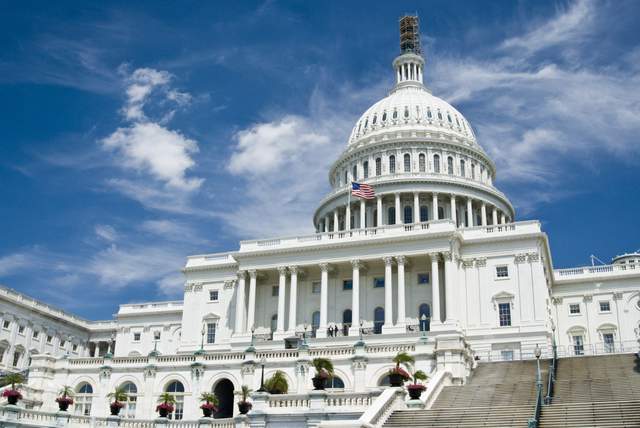
The Federal Energy Regulatory Commission (FERC) issued a final rule today to improve the interconnection process and address the growing backlog of renewable energy projects — mostly wind, solar and storage resources — waiting in queues nationwide.
FERC’s historic ruling marks a step toward the modernization of the U.S. energy grid by streamlining the interconnection process for transmission providers, improving timing and cost certainty to customers, and preventing undue discrimination against new sources of power generation.
“This new rule will enable America’s vast power generation resources to connect to the grid in a reliable, efficient, transparent and timely manner, and in doing so, help provide more reliable, resilient and affordable electricity for all consumers,” said FERC chairman Willie Phillips. “This is a watershed moment for our nation’s transmission grid.”
Phillips underscored the need for today’s reforms by noting that at the end of 2022, more than 2,000 GW of generation and storage were waiting in interconnection queues throughout the country — that is as much electricity generation capacity as all the power plants now operating around the country. Projects now face an average wait of up to five years to connect to the grid.
In a statement following FERC’s final rulemaking, Gregory Wetstone, president and CEO of the American Council on Renewable Energy (ACORE), reiterated the problem with project backlog, adding that the current interconnection delay is “significantly longer than the three-year timeframe for a project in 2015,” denouncing the trend as “completely unacceptable” in meeting U.S. clean energy targets.
“This new rule from FERC is an important first step on this crucial issue for the energy transition, and I am pleased to see some improvements from the proposed rule, including measures to advance the use of grid enhancing technologies,” Wetstone said. “But it is only a start. We encourage the Commission to build on today’s forward progress in addressing the grid backlog by finalizing a rulemaking requiring comprehensive long-term transmission planning, initiating a process to reform the dysfunctional funding model for new transmission lines, and establishing a minimum transfer capability requirement to help address the clear need for greater interregional transmission. These steps will lower electricity costs, enhance grid reliability, and provide for a cleaner and more climate-safe electrical grid.”
FERC’s final rule includes several key areas of reforms, including institution of a first-ready-first-served cluster study process, with increased financial commitments for interconnection customers, to improve the efficiency of the interconnection process and minimize delays; imposition of firm deadlines and penalties if transmission providers fail to complete their interconnection studies on time incorporation of technological advancements into the interconnection process, including consideration of advanced transmission technologies in the interconnection study process; and an update of modeling and performance requirements for inverter-based resources to ensure continued system reliability.
“Our transmission policies must keep pace with the rapid changes in the makeup of our nation’s power generation resource mix,” Phillips said. “Today’s rule is an important milestone. But there is so much more to do. The Commission is working diligently on how to address the key issues of regional transmission planning and cost allocation. We need to take a longer-term, forward-looking approach to planning for essential transmission facilities and to allocate the costs of those facilities in a just and reasonable manner while enhancing the reliability and resilience of the grid.”
Today’s rule, which came out of a Notice of Proposed Rulemaking issued in June 2022, will take effect 60 days after publication in the Federal Register. Compliance filings are due 90 days after publication in the Federal Register.
— Solar Builder magazine

Leave a Reply
You must be logged in to post a comment.